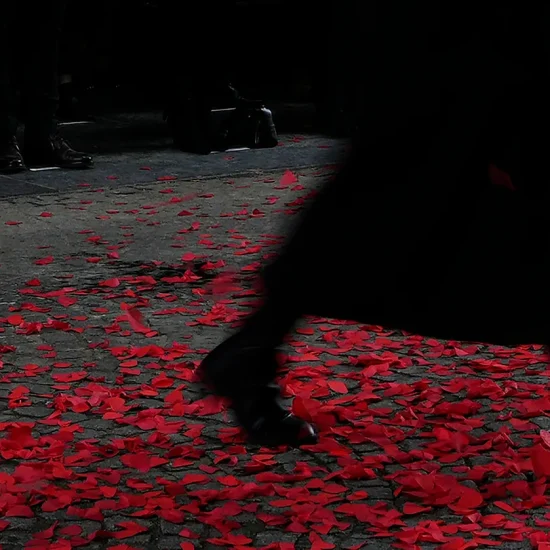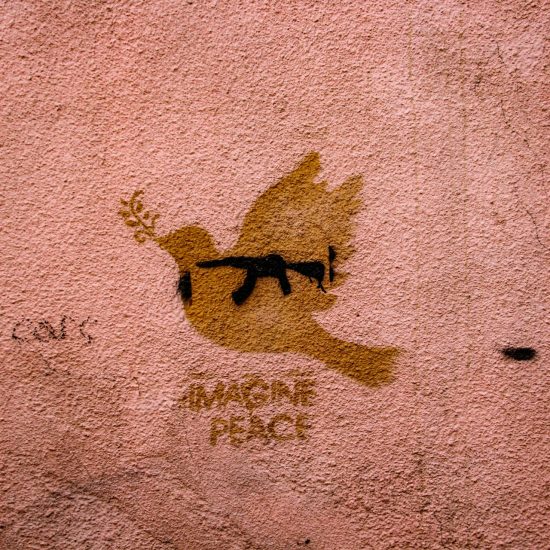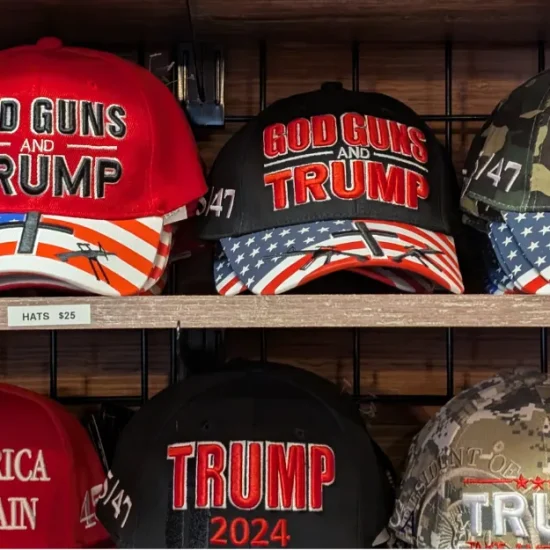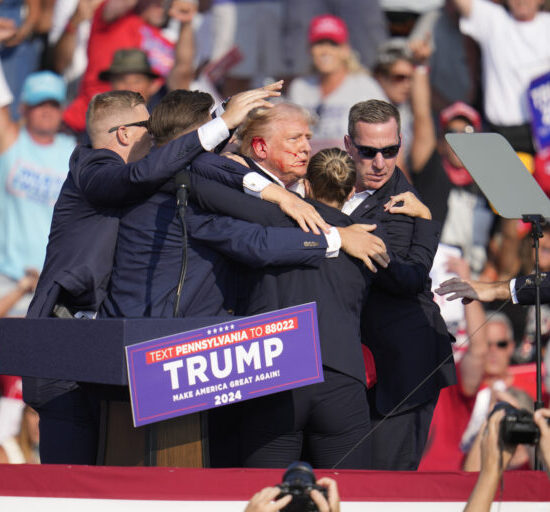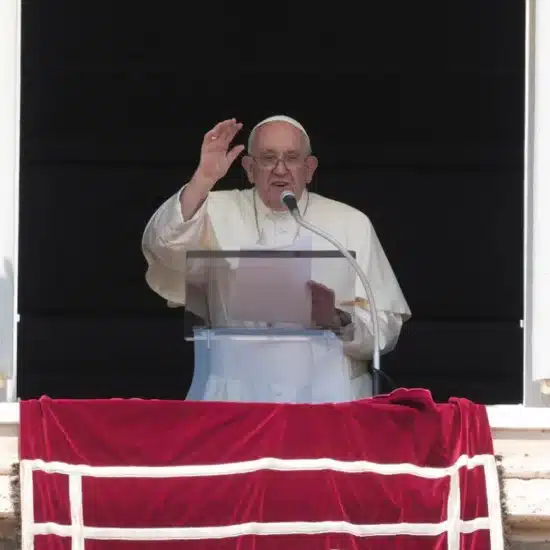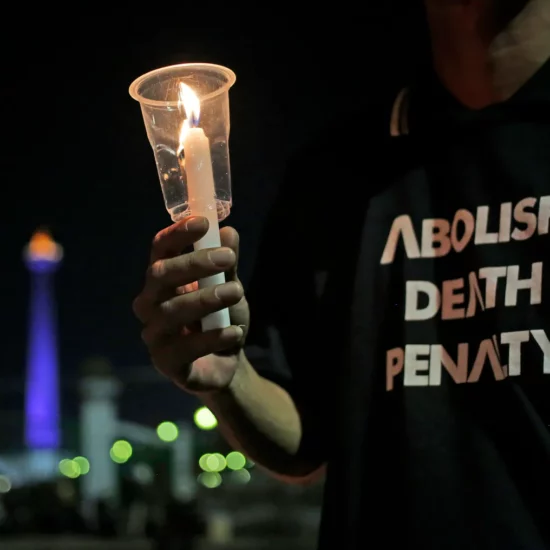SUTHERLAND SPRINGS, Texas (RNS) — The funerals were yet to be held.
The eulogies were yet to be given.
The bodies were yet to be buried.
But one thing was already clear in this tiny Texas town of 600 a couple days after one of the worst mass shootings at an American church: First Baptist Church of Sutherland Springs will be razed.
The site where 25 people were shot dead by a lone gunman who sprayed the small sanctuary with hundreds of bullets will give way to a newly constructed church, a denominational official said.
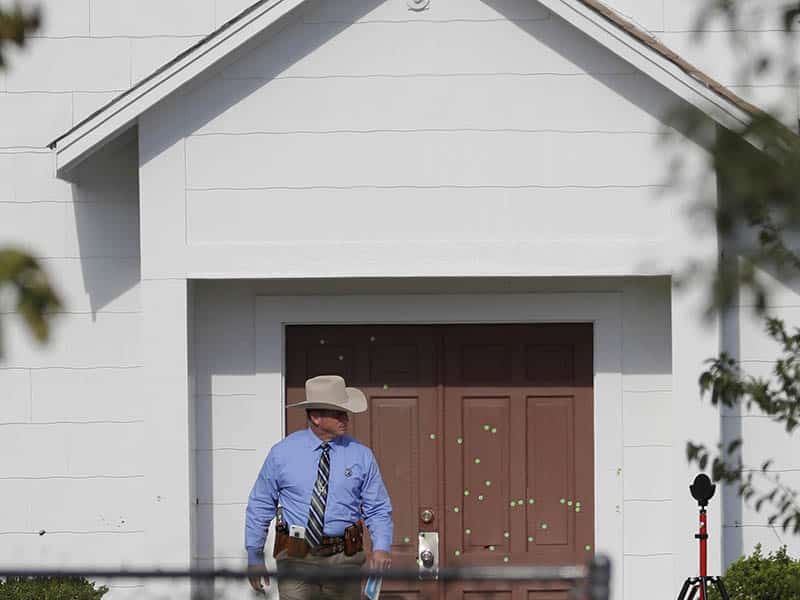 A law enforcement official leaves the First Baptist Church on Nov. 7, 2017, in Sutherland Springs, Texas. A man opened fire inside the church in the small South Texas community on Sunday, killing more than two dozen and injuring others. (AP Photo/David J. Phillip)In what is becoming a grim American ritual, mass shooting sites from Sandy Hook to Columbine have been demolished and then rebuilt. But some churches that experienced horrific killings have sought to reclaim existing sacred spaces.
A law enforcement official leaves the First Baptist Church on Nov. 7, 2017, in Sutherland Springs, Texas. A man opened fire inside the church in the small South Texas community on Sunday, killing more than two dozen and injuring others. (AP Photo/David J. Phillip)In what is becoming a grim American ritual, mass shooting sites from Sandy Hook to Columbine have been demolished and then rebuilt. But some churches that experienced horrific killings have sought to reclaim existing sacred spaces.
That’s not the case with First Baptist. Frank Page, president and CEO of the executive committee of the Southern Baptist Convention, and Steve Gaines, the SBC’s president, confirmed the decision to demolish the church after meeting in Sutherland Springs on Tuesday (Nov. 7) with Frank Pomeroy, its grieving pastor.
“They did say, ‘We can’t go back in there,’” said Page, referring to Pomeroy’s remaining church members. “It’s going to be a reminder of the horrific violence against innocent people.”
Pomeroy and his wife, Sherri, were not at the church on Sunday when 26-year-old Devin Patrick Kelley opened fire. But their 14-year-old daughter, Annabelle, whom the couple adopted at age 2, was killed.
Page said an anonymous donor agreed to fund the construction of a new church. The convention’s North American Mission Board has offered to pay for all of the funerals even though Texas’ Crime Victims’ Compensation program would have done so.
“We’re going to take care of our own people,” Page said.
The church structure may be in danger after hundreds of bullets pockmarked the walls. Sheriff Joe Tackitt Jr. of Wilson County described a gruesome scene of “blood everywhere” inside the church.
“You wouldn’t think they’d want to relive that,” said Andy Wyatt, a resident of Sutherland Springs who built themed vacation Bible study sets for children at First Baptist Church though he was not a member. “They deserve something bigger and better. You want to start fresh, anew.”
That sort of fresh start after a mass atrocity has a long string of precedents:
-
- Columbine High School, where 13 people were killed and 21 were injured in a mass shooting in 1999, was partially rebuilt, including the library where many of the victims died.
- The site of the World Trade Center towers, destroyed on Sept. 11, 2001, is now a rebuilt complex with new skyscrapers, a memorial and museum.
- The Nickel Mines, Pa., schoolhouse where five Amish schoolgirls were murdered in 2006 was torn down and rebuilt.
- In Utoya, Norway, where 69 people — many of them minors — were killed at a church youth camp in 2011, one of the buildings where victims died was preserved, encompassed by a larger building with a memorial and interpretive center.
- Sandy Hook Elementary School in Newtown, Conn., the site of the 2012 shooting that killed 20 children and six adults, was demolished and rebuilt. It reopened last year.
None of those locations were houses of worship, which are meant to be sacred spaces where people turn to the divine to find peace, calm and transcendence. They are also supposed to be places where people can be comforted, supported and healed, not terrorized and murdered.
Because houses of worship are considered sanctified, worshippers may feel the need to reclaim their sacred space. But that can be done in different ways.
Michelle Walsh, a Unitarian Universalist minister who teaches courses at Boston University on trauma and theology, studied a Knoxville Unitarian Universalist Church as it recovered after a lone gunman killed two and wounded seven during a children’s play in 2008.
Pews were realigned, walls were repainted, a curtain filled with bullet holes was removed but saved. A week after the killings, the church rededicated the sanctuary in a service that included blessing the spots where the dead fell and the hanging of a plaque. The whole thing concluded with a hymn, “May Nothing Evil Cross This Door.”
“I have said sometimes there is a fierceness for survivors who say, ‘We have survived this and we have a faith that survives even in the face of something like this,’” Walsh said. “It is a reclaiming and it is a marking of a place as not just a place of death, not just a place of loss, but of life.”
Other houses of worship have found ways to reclaim without rebuilding. After nine people, including the pastor, were killed during a Bible study in the basement at Emanuel AME Church in Charleston, S.C., in 2015, church members hung pictures of the victims on the walls and continued to meet on Wednesday nights, their open Bibles before them. Their historic sanctuary was unaffected in the shooting.
And when six people were killed and four were wounded inside a Sikh temple in Oak Creek, Wis., in 2012, worshippers did not abandon the sanctuary and even preserved some of the bullet holes.
“It frames the wound,” Pardeep Kaleka, son of former temple president Satwant Singh Kaleka, who died in the massacre, told The Associated Press. “The wound of our community, the wound of our family, the wound of our society.”
But in the case of the Texas church shooting, it may be that the crime was so massive that rebuilding is necessary, said Steven Sewell, a Christian grief counselor who often works with churches experiencing trauma.
“Sometimes what happens in churches (that experience trauma) is they stay in the same place physically and spiritually when really it is impossible,” he said. “No one wants to be known as ‘that church’ where ‘that bad thing’ happened. So their rebuilding is what I like to call hidden greatness. That even in the midst of all of this tragedy, there is a hidden miracle that will come out.”
In any case, First Baptist Church of Sutherland Springs will have to rebuild much more than its sanctuary. About half the congregation, including all its Sunday school teachers and many of its band leaders, were among those who perished, Page, the SBC official, said the pastor told him.

